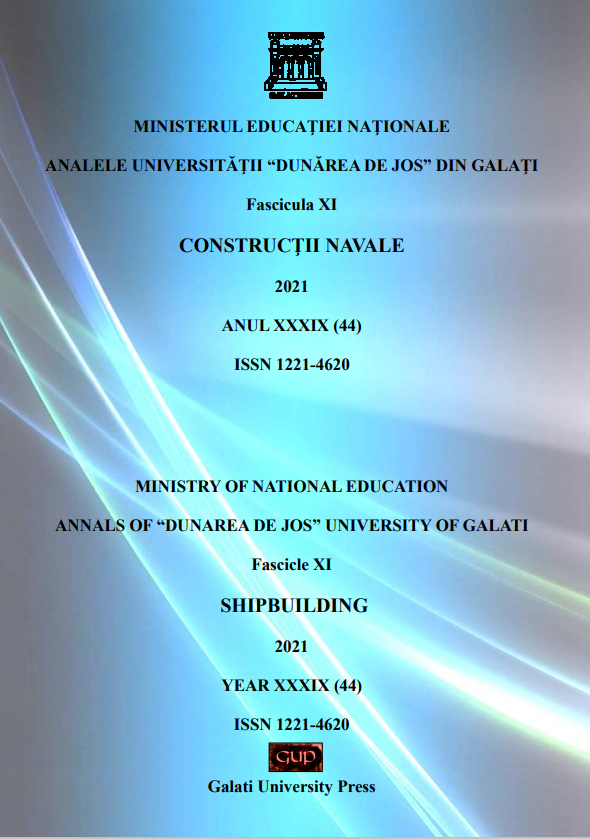Ship concept for cleaning the navigable inland water of floating debris
Abstract
Rivers like the Danube crossing many countries gather floating debris. These countless times block locks, access roads to ports, access walkways on the berths of passenger ships and more.
The paper presents the studies carried out in order to design a ship for the collection of these floating debris. Several variants have been chosen, of which one will be presented that is optimal from the point of view of the propulsion installation and especially of the wave front that it produces during the operation of waste collection and navigation to the place of unloading.
In order to optimize the shapes of the ship, the NUMECA calculation program was used. It provides important data on the wavefront produced by the ship.
Downloads
References
[2] C.B.R.X.M.D.R. Naya Olmer, 2017, “Greenhouse Gas Emissions from Global Shipping”, 2013–2015, The International Concil on Clean Transportation.
[3] Holtrop, J.; Mennen, G.GJ. 1982, “An approximate power prediction method”, International Shipbuilding Progress, Volume 29, No. 335: 166-170.
[4] Lloyd Register of Classification – rules.
[5] NUMECA software – user’s manual.
[6] Obreja C. D., 2005, “Ship Theory-Concepts and Analyse Methods of Ship Performances”, (in Romanian), Editura Didactica si Pedagogica, ISBN: 973-30-1401-X, Bucuresti.
[7] Salvesen, N., Tuck, E. O., Faltinsen, O., 1970, “Ship Motions and Sea Loads”, Transactions of the Society of Naval Architects and Marine Engineers, 78, p., 250 – 287




